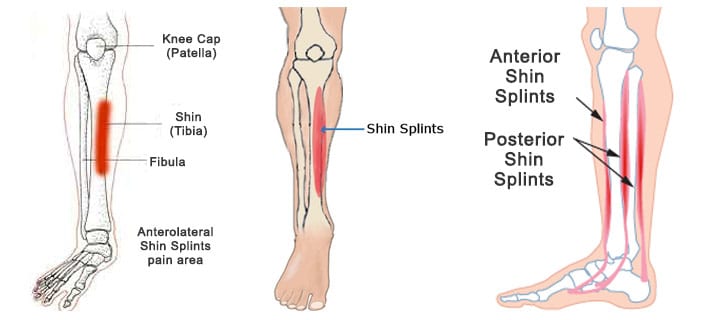Shin splints are characterised by pain along the inner, lower portion of the shin; this pain is usually dull at first, but it can become more severe as the condition worsens. It is usually felt during or after performing vigorous physical activities, and it is felt over an area of at least 5 centimetres; it also tends to affect both legs. However, shin splints aren’t always bilateral, and in those cases, they will usually affect your dominant leg. The painful area might also be swollen.

Shin splints are common amongst runners, dancers, and military recruits. People who suddenly increase the intensity or length of their training regime, those who run on uneven surfaces or use poorly-made or worn-out footwear, have flat feet, suffer from over-pronation of the feet, or are overweight are also more likely to develop shin splints.
Although the specific cause of shin splints hasn’t been determined yet, studies point to the possibility that they are the result of micro-tears in the shin muscles, an inflammation of the periosteum –which is the membrane which covers the bones- surrounding the tibia, or inflammation of the muscles and tendons.
It is important to differentiate between shin splints and other common causes of shin pain, such a stress fractures. The pain caused by a stress fracture is much more localised than the one caused by shin splints, and they are almost always unilateral. However, it is important to note that if shin splint treatment isn’t properly followed, stress fractures might occur as a direct complication of shin splints. A doctor might order an x-ray or other imaging tests to rule out any possible differential diagnosis, and once shin splints have been confirmed, they will proceed to lay out the shin splint treatment plan necessary to restore tissues to health.
Now its time to read our article on 5 effective treatments for shin splints









